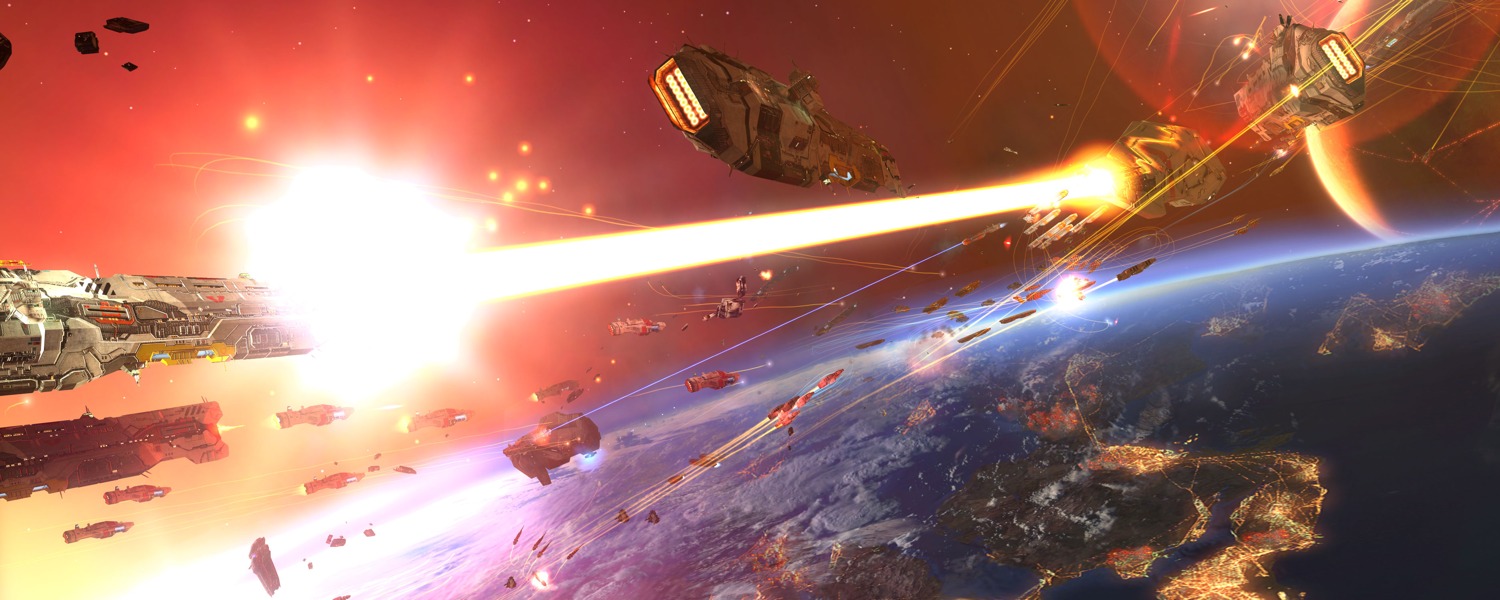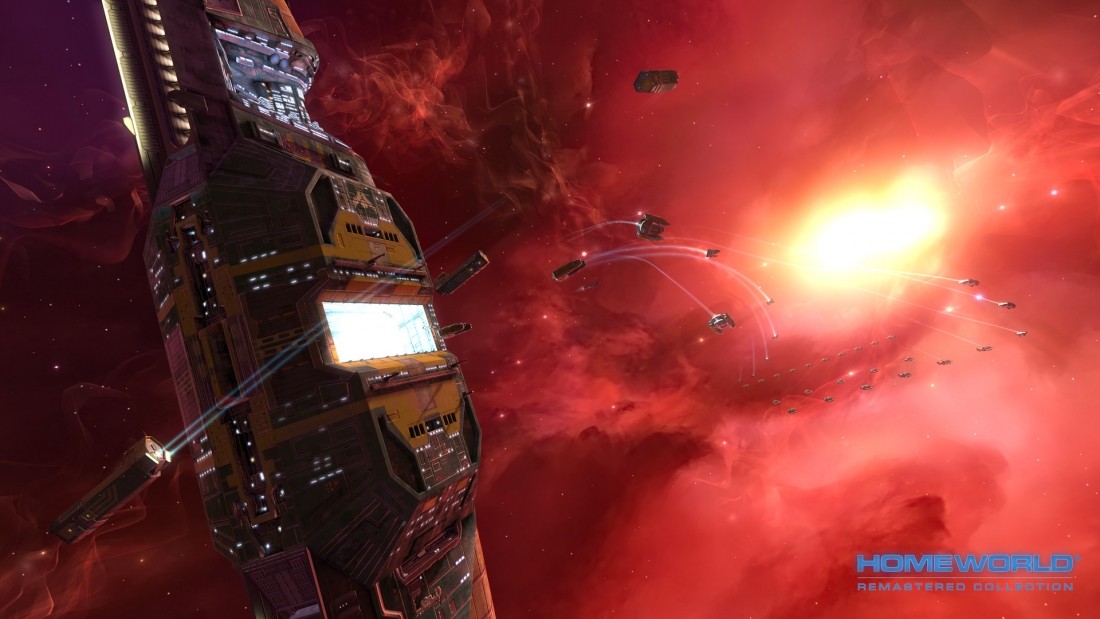Having been a fan of real-time strategy games since the mid-90s, there aren't many titles in the genre that I haven't played. The original Command & Conquer had me hooked and I also spent my share of hours with Dune and Warcraft releases. At the time, RTS games were so similar in look and feel that it was relatively easy to move between them.
That changed in 1999 with the arrival 'Homeworld', the first RTS that allowed players to move through three-dimensional space. Built on the custom Homeworld engine, Relic Entertainment's 3D RTS was praised for its mind-blowing graphics, gameplay and other features, winning both IGN and PC Gamer's game of the year award in 1999.
Given Homeworld's success (and the positive response to the non-canon Homeworld: Cataclysm made by Barking Dog Studios), it was no surprise when Relic and Sierra returned in 2003 with a proper sequel, nor was it a surprise when Homeworld 2 received largely positive reviews with features including a modified engine for even better graphics.
After three successful releases, you may be wondering why it's been so long since you've heard about the series. Roughly a year after Homeworld 2 launched, creator Relic Entertainment was purchased by THQ for nearly $10 million. However, while Relic did develop Homeworld, publisher Sierra Entertainment owned the intellectual property.
As THQ was considered to be a competitor of Sierra, the prospect of a Homeworld sequel remained unlikely until November 2007 when THQ confirmed that it had acquired a license for the Homeworld franchise. Even so, the company didn't confirm a sequel, maintaining that it had no comments about future games based on Homeworld from THQ.
Nothing much was said in respects to new release for the series until 2011 when Relic confirmed that it wanted to make Homeworld 3, but without actually saying if the game was in development. Further setbacks crushed the chances of Homeworld making a comeback when THQ went bankrupt and moved to liquidate its assets in early 2013.
Also read: Homeworld Remastered gameplay impressions, the return of an almost perfect game
The company ended up being sold to Sega, though the Homeworld IP was not included in that sale, instead being acquired by Gearbox Software for $1.35 million. Gearbox's initial plan was to bring existing Homeworld games to digital sales platforms, but the company also created a forum for fans to exchange ideas about how the series should proceed.
In July 2013 Gearbox announced the release of Homeworld HD and Homeworld 2 HD along with the original versions of the games for 2014. In March 2014 Homeworld HD was renamed to Homeworld Remastered Collection, which finally hit Steam last week for $35 and includes the original and remastered versions of Homeworld and Homeworld 2.
Although Homeworld fans haven't been lucky enough to receive a brand new game, they are able to relive the magic of 1999 and 2003 at high resolutions with a full graphical makeover. The remastered versions have high-res textures and models, new visual effects, recreated cinematic scenes, and support for HD, Ultra HD and 4K resolutions.
Gearbox recommends gamers have at least a basic quad-core CPU and either a GeForce GTX 560 or Radeon HD 5850 (1GB). Homeworld Remastered uses OpenGL3.3 so we don't expect the kind of DX11 features in Evolve for example, but it still has the potential to be quite demanding with players having the ability to build well over 100 ships.
Testing Methodology
We used the latest AMD and Nvidia drivers on 30 graphics card configurations covering all price ranges. Our test rig was outfitted with the Intel Core i7-5960X to remove CPU bottlenecks that could influence high-end GPU scores.
We used Fraps to record 120 seconds of gameplay for benchmarking. Real-time strategy games are quite different from first person shooters when it comes to benchmarking and Homeworld Remastered is particularly tricky.
A well designed first-person shooter should offer fairly consistent frame rates throughout a level. RTS games on the other hand typically start off with extremely high frame rates as there are few units for the GPU to render and for the CPU to calculate. As the unit count increases, the frame rate tends to drop and once a major battle takes place this is typically when you will see the lowest frame rates.
Homeworld Remastered was tested in a similar manner to StarCraft II. We played a skirmish with seven AI-controlled players in a 4v4 match. The resources were set to their maximum value and we went with a 15 minute build time so players could reach critical mass. Just moments before the first major battle was set to take place we made a save which could be loaded repeatedly.
As the test starts over 200 of my own ships engage the enemy and all hell breaks loose for two minutes. With the GTX 980 frame rates were initially around 140fps at 2560x1600 but that dipped down to 50fps as the ships began to engage each other.
So if we were to benchmark the game in the building stage, gathering resources and what not, then frame rates would be around three times higher than what we are going to show during our massive battle scene, so keep that in mind.
Test System Specs
- Intel Core i7-5960X(3.00GHz)
- x4 4GB Kingston Predator DDR4-2400 (CAS 12-13-13-24)
- Asrock X99 Extreme6 (Intel X99)
- Silverstone Strider Series (700w)
- Crucial MX200 1TB (SATA 6Gb/s)
- Gigabyte Radeon R9 290X (4096MB)
- Gigabyte Radeon R9 290 (4096MB)
- Gigabyte Radeon R9 285 (2048MB)
- Gigabyte Radeon R9 280X (3072MB)
- HIS Radeon R9 270X (2048MB)
- HIS Radeon R9 270 (2048MB)
- HIS Radeon R7 265 (2048MB)
- HIS Radeon R7 250 (1024MB)
- HIS Radeon HD 7970 GHz (3072MB)
- HIS Radeon HD 7970 (3072MB)
- HIS Radeon HD 7950 (3072MB)
- HIS Radeon HD 7870 (2048MB)
- HIS Radeon HD 7850 (2048MB)
- HIS Radeon HD 7750 (1024MB)
- Gigabyte GeForce GTX 980 (4096MB)
- Gigabyte GeForce GTX 970 (4096MB)
- Gigabyte GeForce GTX 960 (2048MB)
- Gigabyte GeForce GTX 780 Ti (3072MB)
- Gigabyte GeForce GTX 780 (3072MB)
- Gigabyte GeForce GTX 770 (2048MB)
- Palit GeForce GTX 760 (2048MB)
- Gigabyte GeForce GTX 750 Ti (2048MB)
- Gainward GeForce GTX 680 (2048MB)
- Gainward GeForce GTX 660 Ti (2048MB)
- Gainward GeForce GTX 660 (2048MB)
- Gainward GeForce GTX 650 Ti Boost (2048MB)
- Gainward GeForce GTX 650 Ti(2048MB)
- Gainward GeForce GTX 650 Ti(2048MB)
- Gainward GeForce GTX 550 Ti(1024MB)
- Microsoft Windows 8.1 Pro 64-bit
- Nvidia GeForce 347.52 WHQL
- AMD Catalyst 14.12 Omega



